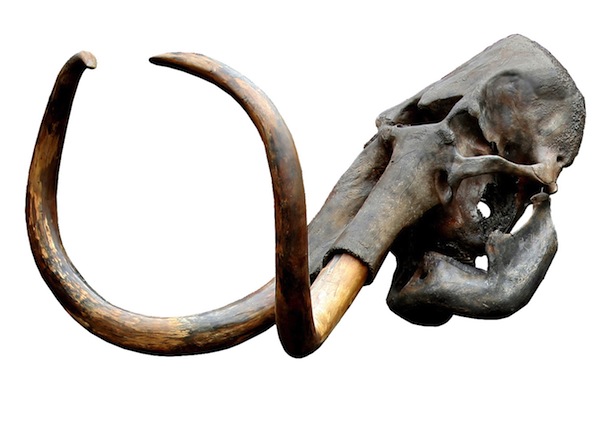Huge new exhibition at the Museum from January
Mammoths of the Ice Age
Friday 24 January to Sunday 20 April 2014
National Museum of Scotland, Chambers Street, Edinburgh
This January National Museums Scotland presents Mammoths of the Ice Age, a major exhibition exploring the mysteries of the Ice Age and revealing what life was like for the iconic mammals of this era; the mammoth and the mastodon.
Unlike dinosaurs and other prehistoric mammals, mastodons and mammoths lived side by side with humans for thousands of years. In Mammoths of the Ice Age visitors can again come nose-to-trunk with these intriguing animals.
The exhibition travels to the National Museum of Scotland from The Field Museum of Natural History in Chicago. An extensive collection of significant objects from the Ice Age will be brought together for the first time in the UK, from some of the oldest human art in existence to woolly mammoth hair, which could grow up to a metre long, preserved Columbian mammoth dung and giant tusks and teeth.
Mammoths of the Ice Age will provide a fascinating insight into these intriguing animals and their interaction both with each other and their environment, and it will also explore the controversial debates surrounding the causes of their extinction.
Nick Fraser, Keeper of Natural Sciences at National Museums Scotland commented:-“We are thrilled to bring Mammoths of the Ice Age to the National Museum of Scotland from the world renowned Field Museum in Chicago. The Ice Age was a fascinating period and we are excited to show how scientists have used a variety of evidence to reconstruct the lifestyles of these remarkable animals. We look forward to welcoming visitors to this great exhibition and hope that they find these colossal mammoths as awe-inspiring as our predecessors did.”
In this interactive exhibition, visitors can get hands-on with skull casts, teeth, tusks and fossil jaws to learn about early evolutionary adaptations. Discovering how mammoths used their trunks and tusks, visitors will be able to manipulate a mechanical trunk to pick up objects and help a mammoth balance the weight of its tusks.
The exhibition delves into the social groups and behaviours of mammoths and mastodons, by comparing them with today’s elephants. Visitors can try their hand at jousting with tusks, imitating the behaviour of adult male mammoths who sparred for dominance and to win breeding rights as they roamed the landscape of Siberia thousands of years ago.
The family tree of elephants, mammoths and mastodons can be traced back 55 million years to its origin in Africa. Visitors to Mammoths of the Ice Age will be able to see and touch the biggest and smallest mammoths that ever lived. An imposing full-scale replica of a Columbian mammoth, which would have stood around 4 metres tall, will dwarf its much smaller cousin – the dwarf mammoth – which lived on the remote Wrangel Island in the Arctic Sea, where the last mammoths survived on Earth only 4,000 years ago.
Mammoths of the Ice Age looks at the differences between mammoths and mastodons, examining their social behaviour and ecology based on fossil evidence and comparisons with their present-day relatives, the elephants. Mastodons were shorter and stockier than mammoths, with thicker bones and differently shaped tusks. In North America, mastodons lived alongside mammoths because they had different diets and so did not compete for food, with a mammoth consuming an estimated 226 kilogrammes of vegetation every day.
Mammoths and mastodons lived side by side with humans for thousands of years and proved to be a source of food for early people as well as artistic inspiration. Visitors will see these great beasts through the eyes of ancient humans as they examine artwork depicting mammoths in the form of miniature carvings made of bone, stone and mammoth ivory. This early human artwork on display dates from between 35,000 and 10,000 years ago and is some of the oldest art in existence.
Also on display will be a replica model of Lyuba, the 40,000-year old baby mammoth who was found in 2007 by a Siberian reindeer herder and two of his sons. She is the best-preserved mammoth ever discovered, with most of her features intact, providing great insights into how mammoths lived. Exploring why mammoths may have died out, Mammoths of the Ice Age investigates the theories surrounding their extinction, such as climate change, hunting by humans, cross-species disease and a meteorite hitting the Earth.
The exhibition will be supported by a series of public events, talks and lectures.
This exhibition was created by The Field Museum, Chicago.
Admission: £9 adults, £7.50 concession, children (age 5-15) £6, family (2 adults, 2 children) £25. Entry is free to National Museums Scotland Members and children under 5.




